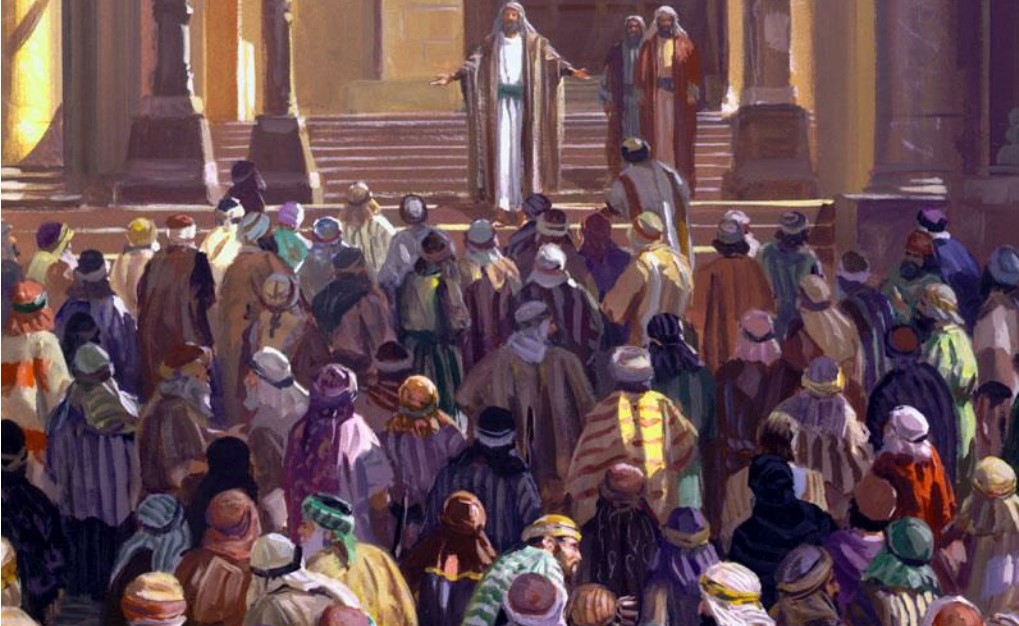
How did those who followed ‘The Way’ taught by Jesus organise themselves? What were their beliefs, practices, regulations and leadership? If there are answers to these questions, we can then ask, ‘Are they represented in Christian thought and observance today?’ If not! Why not?
James Tabor in his book ‘Paul’ describes what he feels the evidence suggests, concerning the nature of the movement in which Jesus was involved. “The original apostles and followers of Jesus, led by James and assisted by Peter & John continued to live as Jews, observing the Torah and worshipping in the temple in Jerusalem, or in local synagogues, while remembering Jesus as their martyred Teacher and Messiah. They neither worshipped nor divinized Jesus as the Son of God, or as a dying and rising Saviour, who died for the sins of humankind. They practiced no ritual of baptism into Christ, nor did they celebrate a sacred meal equated with ‘eating the body and drinking the blood’ of Christ as a guarantee of eternal life. Their message was wholly focused around their expectation that the kingdom of God had drawn near, as proclaimed by John the Baptist and Jesus, and that very soon God would intervene in human history to bring about his righteous rule of peace and justice among all nations. In the meantime both Jews and non Jews were urged to repent of their sins, turn to God and live righteously before him in expectation of his kingdom”.
Key Questions
Why didn’t this movement continue ? It began to breakdown after the martyrdom of James the Just, killed under the orders of High Priest Ananus 62CE and the seige of Jerusalem by the Romans 70CE
Source of James death: James remained the leader of the Jerusalem church until his death around A.D. 62. This is the account of his martyrdom according to Hegesippus (a 2nd century Christian about whom little is known), which is quoted in Eusebius’ Ecclesiastical History, vol. II, ch. 23 (A.D. 323)
How was the movement of John the Baptist, Jesus and James replaced ? After the destruction of Jerusalem, being allied to Jewish causes was unpopular, especially among non Jews. An example of the change in emphasis is highlighted in the Gospel of Luke (oldest of the synoptic Gospels) as the writer softens the Romans and blames the Jews. Secondly, Pauls inception of Christology gains prominence among a wider geographical area among gentile dominated populations. Thirdly, the growing literature among the church is dominated by Paul, through his epistles and influence upon the synoptic Gospel authors. Over time after his death, Pauls revelations and Gospel initiates Christianity and his influence becomes so widespread it emerges as the orthodox religion.
Jesus’ movement is thus eclipsed by Pauls religion
When an individual today attends a church service they hear about how Christs’ death atones for their sins on their acceptance of him. Belief in Jesus as Christ is essential. The movement Jesus belonged to taught that to be worthy of God’s kingdom on earth a person needed to behave considerately, the early movement emphasised the message of Jesus, it was never about him.
Conclusion
The disparity between the earliest historical movement and the later Christian church is arguably not what Jesus lived, taught and died for. They share some common ground, believing in the first two commandments, to love God and your neighbour as yourself. To live by the golden rule, ‘Don’t do anything that you wouldn’t want done to you’. Thereafter, their beliefs, practices, etc, grow further and further apart to the extent that a person may legitimately ask what can organised religion offer me, if it doesn’t accurately reflect Jesus’ historical movement?